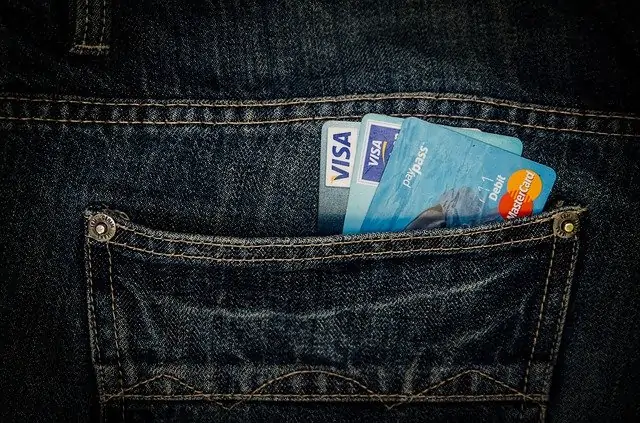This post contains affiliate links. It means that if you click on the links and make a purchase, we will receive a small commission at no additional cost to you. This allows our blog to continue providing you with free information. We only include links and products that we truly believe in. You can read the full disclosure here.
Moving to Germany or new in Germany? Check out our Resources Page for all the help you need!
Are you a freelancer or business owner in Germany? Understanding VAT in Germany (Value Added Tax) is crucial for managing your finances. In this article, I’ll guide you through everything you need to know about VAT in Germany, from the basics to the specifics. So, you can navigate the system with confidence.
Table of Contents
ToggleA short summary for busy people
- The VAT rate in Germany is 19% for most things. But certain things can have 7% or 0%.
- The VAT burden is on the end consumers. But the businesses in between are collecting the VAT on behalf of the German tax office.
- It is possible to get back VAT on your purchase if you are a traveler leaving Germany and going to a country outside of the EU.
- All businesses in Germany (except small businesses “Kleinunternehmer”) need to charge VAT on their invoices.
- VAT charges are exempted on specific professions/ services. Or for B2B sales inside the EU where the reverse charge procedure applies. Or for selling outside of the EU.
- If the businesses forget to charge VAT on their invoices, they will still owe that VAT to the German tax office.
- Most businesses need to do VAT reporting, including advance VAT returns and annual VAT declaration. They can get a refund from the tax office if their input VAT is higher than the VAT received from their customers.
- Using tax software to prepare your invoices can save you a lot of time and effort.
Introduction
When I first moved to Germany from Hong Kong, I had no idea about VAT. It was something totally new to me because I never had to think about it back home. At first, I didn’t really care about it. I was just a regular consumer and didn’t bother to look into it.
But a few years later, when I started my own business (this blog!), everything changed. Suddenly, I needed to understand VAT because it was important for my business.
You see, I’m a CPA (Certified Public Accountant) from Hong Kong. So, understanding taxes is part of my job. That’s when I started digging into all the details of how VAT works in Germany.
If you’re like me and want to learn more about VAT, especially if you’re a freelancer or a business owner in Germany, then keep reading. I’ll explain everything you need to know about how VAT works here.
Disclaimer: Please be aware that this article is intended to provide you a brief overview of the German tax return. This blog is not qualified to give you any tax advice according to German law. If you need more details and specific advice on your personal situation, we would highly recommend you consult a tax adviser or the German tax office.
What is VAT in Germany?
VAT is a tax on goods and services in Germany, and businesses have to include it in their prices. VAT stands for value-added tax. And in German, “Umsatzsteuer” or “Mehrwertsteuer”
There are different VAT rates in Germany for different items, like 7% for some things and 19% for most others. Businesses have to register for VAT if their annual turnover exceeds a certain amount. And they have to follow rules for collecting and reporting VAT.
Read also: Employment & Labor Law in Germany – Know Your Employee Rights
How does VAT work in Germany?
When you buy something in Germany, you are paying VAT as an end consumer. For example, you bought a dress in a store in Germany for 50 EUR. If you look at the receipt, you will see that the dress is 42 EUR, plus 8 EUR VAT, adding up to the total of 50 EUR you paid.
Now, let’s look from the perspective of the store. The store bought the dress from its supplier for 30 EUR and resold the dress to you for 50 EUR. When the store bought the dress from its supplier, it paid 25 EUR for the dress plus 5 EUR VAT to its supplier.
So, the store has paid 5 EUR VAT to the supplier and received 8 EUR VAT from you (the end consumer). Therefore, in the end, the store will have to pay 8 EUR minus 5 EUR = 3 EUR VAT to the German tax office.
From the perspective of the supplier, he has received 5 EUR VAT from the dress store. The supplier will need to transfer this 5 EUR to the German tax office.
So, in total, the German tax office receives 3 EUR from the dress store, and 5 EUR from the supplier. This is a total of 8 EUR VAT.
The VAT burden is on the end users
As you see in this example, the burden of VAT is actually on the end consumer in the end. All the businesses in between this flow (from manufacturing to end customers) are only collecting the VAT on behalf of the tax office. These businesses will need to do VAT reporting and send the VAT amount to the tax office.
The system works like this so that the end customers do not have to worry about paying or reporting VAT to the tax office. The businesses do this instead.
Read more: Tax return in Germany – Comprehensive Guide for Expat
Is there a difference between VAT and sales tax?
The terms VAT and sales tax are often used interchangeably, even though they’re not exactly the same. Referring back to our previous example, the 8 EUR in your receipt is the sales tax. This is because sales tax is paid by the end consumers.
For the store, the 8 EUR it received from you is the VAT that it has to hand over to the government. So, VAT is a broader term that includes both the input tax paid by businesses and the sales tax paid by consumers.
Note that private individuals generally can’t reclaim VAT. However, companies can offset the VAT they paid against their VAT liability. Just like the example of the dress store. It can claim back the 5 EUR VAT it paid to its supplier. Just deduct the 5 EUR from the 8 EUR VAT it receives from its end consumer.
What are the VAT rates in Germany?
In Germany, VAT, or Value Added Tax, has two main rates: the standard rate of 19% and the reduced rate of 7%.
The standard rate applies to most goods and services, while the reduced rate is for specific items like foodstuff, water supplies, books, newspapers, and cultural services. For instance, admission to cultural events and hotel accommodations are taxed at a reduced rate.
Some specific items have zero VAT rates. For example, medical treatment, insurance, long-term property rental, etc.
How to get back VAT when you are leaving Germany?
There is an exception when an individual consumer can claim back the VAT. This case is mostly for travelers in Germany.
When you shop in Germany and plan to take your purchases home, you can get a refund on the VAT you paid if you’re from a country outside the European Union, or if you’re an EU resident leaving the EU for more than a year.
In general, here’s what you need to do:
- Tell the store you’re exporting the goods and get special papers from them with your receipt.
- Leave Germany on a non-stop flight outside the EU within three months of buying the items.
- At the airport, show your special papers, receipts, purchased items, passport, and flight tickets to Customs.
- Customs will check everything and stamp your papers if it’s okay.
- You may get paid immediately at a refund booth at the airport. Or you will have to send the stamped invoice back to the store where you bought the items to get your refund.
You may need to meet special conditions like minimum purchase amount. So, make sure to check the rules before you shop.
Who needs to charge VAT in Germany?
If you have a business in Germany, you usually have to add VAT to your prices. But there are some cases when you don’t have to. For example, if you run a small business (called “Kleinunternehmer”), you can choose not to add VAT.
Let’s say you’re a freelancer and your sales were less than €22,000 last year and you expect them to be less than €50,000 this year (in the year 2024), you can choose to be a “Kleinunternehmer” and do not add VAT.
Note that if you do not charge VAT, you can also not claim back the VAT on your business expenses. So, it depends on your business whether being a “Kleinunternehmer” makes sense or not.
Here are some other situations where you might not need to charge VAT:
- Exporting Goods: When your customer is in a non-EU country, you don’t have to charge VAT. For instance, if you sell a product to someone in the United States, you won’t charge them VAT.
- B2B sales: If you are selling to another company inside the EU, you may not need to charge VAT due to the reverse charge procedure.
- Specific professions: Certain professions, like medical practitioners, are also exempt from VAT regardless of how much they earn. For example, doctors, psychotherapists, and physiotherapists don’t have to add VAT to their services.
- Specific services: For example, revenue from renting or selling property doesn’t have VAT. Other services that don’t have VAT include insurance, education, etc.
Above are just some general guidelines. VAT can be very complicated, especially if you are trading with another country. You can use this website to get some idea whether you need to charge VAT or not. It depends on factors like whether you are selling inside/ outside the EU, and whether you are selling goods/ services, etc.
VAT registration in Germany
When you start a business in Germany, you need to register your business with the authority. This is how you get your Steuernummer (tax number) and your VAT number.
When you’re filling out the form to register your business, you may choose to register as a small business “Kleinunternehmer” that doesn’t charge VAT. Otherwise, you will need to start charging VAT on your invoices.
VAT registration in Germany is crucial for both local and foreign companies to ensure tax compliance. If you are a local business in Germany and your business’s annual turnover exceeds a certain threshold (not qualified to be a “Kleinunternehmer”), you will have to register for VAT.
You have to submit an application, registration certificate, and information about your company such as the organization, activities, and expected turnover.
Similarly, foreign companies that conduct taxable transactions in Germany also need to register for VAT. The registration process is similar to that for local companies.
Your German VAT number is known as “Umsatzsteuer-Identifikationsnummer” or “USt-IdNr” in short. It consists of the country code “DE” and a unique nine-digit numeric identifier.
Once you’re registered, you need to include VAT on your invoices and submit timely returns to the German tax office. Remember, complying with VAT regulations is essential for your business, and failure to do so can lead to penalties.
How to charge VAT in Germany?
When you sell goods or services in Germany, you need to include VAT in the price.
Going back to our former example: the store that is selling the dress. The dress costs 42 EUR and the VAT rate is 19%, meaning that the store will charge the customer 42 EUR*1.19= 50 EUR
When you purchase goods or services for your business, you pay VAT on those expenses. For example, if the store bought the dress from its supplier for 25 EUR with a 19% VAT rate, then the store paid 25 EUR plus 5 EUR VAT = 30 EUR in total.
Now, when the store is filing the VAT return, it will compare how much VAT it has received from its customers, versus how much VAT it has paid as its business expenses.
If the store has received less VAT from its customers compared to the VAT it paid for its business expenses, it can receive a VAT refund. On the contrary, it will have to pay the VAT difference to the tax office.
If you forget to add VAT to your customer’s bill, you still have to pay that VAT to the tax office.
For example, if the store sent out an invoice for 42 EUR for the dress, and forgot to include the 8 EUR VAT, the store would still owe that 8 EUR to the tax office.
So, it’s important to make sure your invoices are correct. Or you might end up losing money.
How often do you need to file your advance VAT return?
The advance VAT return “Umsatzsteuervoranmeldung” will usually have to be filed every month or every 3 months. Whether you should file an advance VAT return monthly or quarterly depends on the VAT liability from the previous year.
For example, in 2024, if your VAT liability from the prior year is more than 7,500 EUR, you will have to file your advance VAT return this year monthly.
If your VAT liability from the prior year is between 1,000 to 7,500 EUR, you can file your advance VAT return quarterly.
If the number is below 1,000 EUR, then you do not have to file the advance VAT return.
Remember, the advance VAT return needs to be filed even when you have no VAT to report.
When is the deadline for VAT payment?
The due date of your VAT payment is due by the 10th of the following month. For example, your June VAT payment will be due on the 10th of July.
But there are 3 extra days granted for the bank transfer to process. So, your money only needs to arrive at the tax office by 13th July. And if the 13th of July is a holiday, the deadline will be moved to the next working day.
You may be able to apply for a permanent extension “Dauerfristverlängerung“. This will give you one extra month after the deadline to file your advance VAT return.
Read also: Opening a Bank Account in Germany – 5 Best Bank Accounts With English Services
What happens if you are late?
If you miss the deadline for submitting your VAT returns, you’ll have to pay a fine called “Verspätungszuschlag“. In 2024, this fine can be up to 10% of the VAT you owe (with a maximum of 25,000 EUR).
It’s essential to pay attention to these deadlines to avoid fines. Late payments can really add up!
Annual VAT declaration in Germany
Besides the advance VAT return, in 2024, businesses in Germany (except for Kleinunternehmer) must also file the annual VAT declaration “Umsatzsteuerjahreserklärung“. You have until 31st July after the tax year end to file this return.
How should you put VAT on the invoice?
When making an invoice, always include the value-added tax (VAT) details. This is important for every invoice, whether it’s for individuals or businesses. Include the net amount, VAT rate, total VAT amount, and total gross amount.
For example, if you sell a dress that costs 42 EUR with a 19% VAT rate, the VAT would be 8 EUR, making the total 50 EUR.
Your invoice will state the net amount of 42 EUR, plus a 19% VAT rate, totaling a VAT amount of 8 EUR, and the gross amount of 50 EUR. Remember to state also your VAT number “USt-IdNr” on the invoice.
How to invoice if you sell to another EU country?
If you’re invoicing someone in another EU country, it gets a bit more complicated.
If it’s a private individual, you charge VAT as you would for a German customer. But if you sell to other businesses (B2B) in another EU country, things change.
The place of delivery and service is considered to be in the recipient’s country. So, the recipient company handles the VAT in their own country. This is called the reverse charge procedure.
On your invoice, only include the net amount (no VAT needed), and mention “reverse charge procedure” or in German “Reverse-Charge-Verfahren”.
In this case, the recipients in another EU country will be responsible for paying the VAT on that invoice in their own country. This is so that you do not have to register your business in every EU country you sell to pay the VAT to that country.
When the reverse charge procedure applies, it is important to put the VAT number from both you and your customers on the invoice.
Remember, the reverse charge procedure only applies if you are selling to another business that has registered a VAT number. For private customers in another EU country, they are not VAT registered to pay for VAT on that invoice. So, you will still need to charge them VAT.
Use tax software to prepare your invoices
Preparing and issuing invoices can be a real headache for small business owners and freelancers. There are so many requirements to think about. Especially in Germany, there are strict rules about what your invoice needs to include and whether you need to charge VAT. Figuring out the right VAT rate and all the other details can be very time-consuming.
I used to spend a lot of time on bookkeeping because of this, but then I learned about tax software. It prepares all my information and even tracks my invoices to see if they’ve been paid. It has made my life much easier, and I highly recommend using a tax program instead of struggling with Word or Excel documents as I did in the beginning.
Read more: 11 Best Tax Return Software Germany – Suitable for Anyone
Conclusion
Now that you understand the ins and outs of Value Added Tax (VAT) in Germany, you’re better equipped to manage your finances as a freelancer or business owner. By applying this knowledge, you can ensure compliance with tax regulations and make informed financial decisions for your business.
Understanding VAT in Germany can be challenging, even for someone with an accounting background like mine. It’s a complex topic that can easily confuse anyone.
Don’t hesitate to seek help from tax advisors if you’re unsure. Getting it right is crucial to avoid problems down the road, including fines and penalties. So, if you’re feeling lost, reach out for assistance.
Pin it for later:

DISCLAIMER
Please be aware that this article is intended to provide you a brief overview of the German tax return. The information and tips in this article are based on personal experiences and thorough research.
This blog is not qualified to give you any tax advice according to German law and we do not accept any form of liability resulting from reading this article. Our blog makes no guarantee as to the accuracy or timeliness of the information in this article. If you need more details and specific advice on your personal situation, we would highly recommend you consult a tax adviser or the German tax office.
Do you charge VAT in Germany, or have you claimed back the VAT you paid in Germany? What is your experience on this topic? Which tax software do you think is the best to use? Leave a comment below and share your experience!
Moving to Germany or new in Germany? Check out our Resources Page for all the help you need!
If you found this article helpful, consider supporting this website by buying me a coffee. Every small donation helps to keep this blog alive. You can also ask me any questions here. Buy me a coffee







